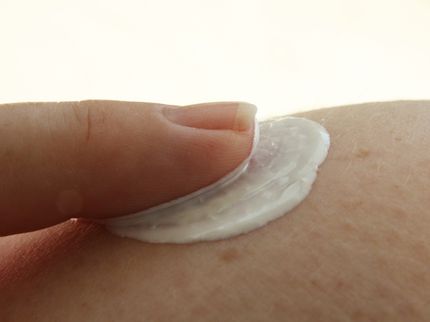Nanoscopic gold spheres can be reversibly bound to DNA strands reversibly bound to DNA strands
How can individual components be assembled into larger functional units? And how can robot arms, for example, be made to "grab" specific nano-objects-and to release them at the right moment? The field of biotechnology presents interesting approaches to these problems. Researchers at the University of Dortmund have now developed an elegant method to link nanoparticles reversibly: they use short DNA strands to cause gold spheres to aggregate "on demand" and then to separate again, also "on demand".
The "genetic molecule" DNA has already proven itself as a nanoconstruction material; the specific base pairing of mutually complementary DNA regions puts this material into a position that promotes organization into defined structures.
A team headed by Christof M. Niemeyer has now used this property of single DNA strands to link together nanoscopic gold particles. The principle works as follows: The single strands of DNA with two different sequences, A and B, are attached to tiny spheres of gold. Free DNA strands are then added as "glue". These consist of three regions: Region A' is exactly complementary to DNA A and immediately binds to the A strands on the gold spheres. After A' comes region B', which is the counterpart to DNA B and thus binds to the B strands on the gold spheres. In this manner, the gold spheres are linked into small clumps.
The third region of the "glue" DNA, called C', is complementary to neither DNA A nor DNA B, and thus remains unaffected. This end acts as a kind of "tear-away strap" when it is time to separate the gold spheres from each other. The "glue remover" is a single strand of DNA that is exactly complementary to the glue DNA A'B'C', and so consists of regions A, B, and C. This is added to the mixture, and as soon as its C end "discovers" the free C' end (the "strap") on the glue DNA, it binds to it. The entire strip of "glue" then detaches to form a complete double strand with the glue-dissolving DNA. The gold spheres are thus separated once again and and revert back to their initial state. Addition of more single strands of glue DNA, can then reinitiate the aggregation.
"Our concept," says Niemeyer, " could be the basis for the production of nanomaterials with programmable functions."
Organizations
Other news from the department science

Get the life science industry in your inbox
By submitting this form you agree that LUMITOS AG will send you the newsletter(s) selected above by email. Your data will not be passed on to third parties. Your data will be stored and processed in accordance with our data protection regulations. LUMITOS may contact you by email for the purpose of advertising or market and opinion surveys. You can revoke your consent at any time without giving reasons to LUMITOS AG, Ernst-Augustin-Str. 2, 12489 Berlin, Germany or by e-mail at revoke@lumitos.com with effect for the future. In addition, each email contains a link to unsubscribe from the corresponding newsletter.





















































